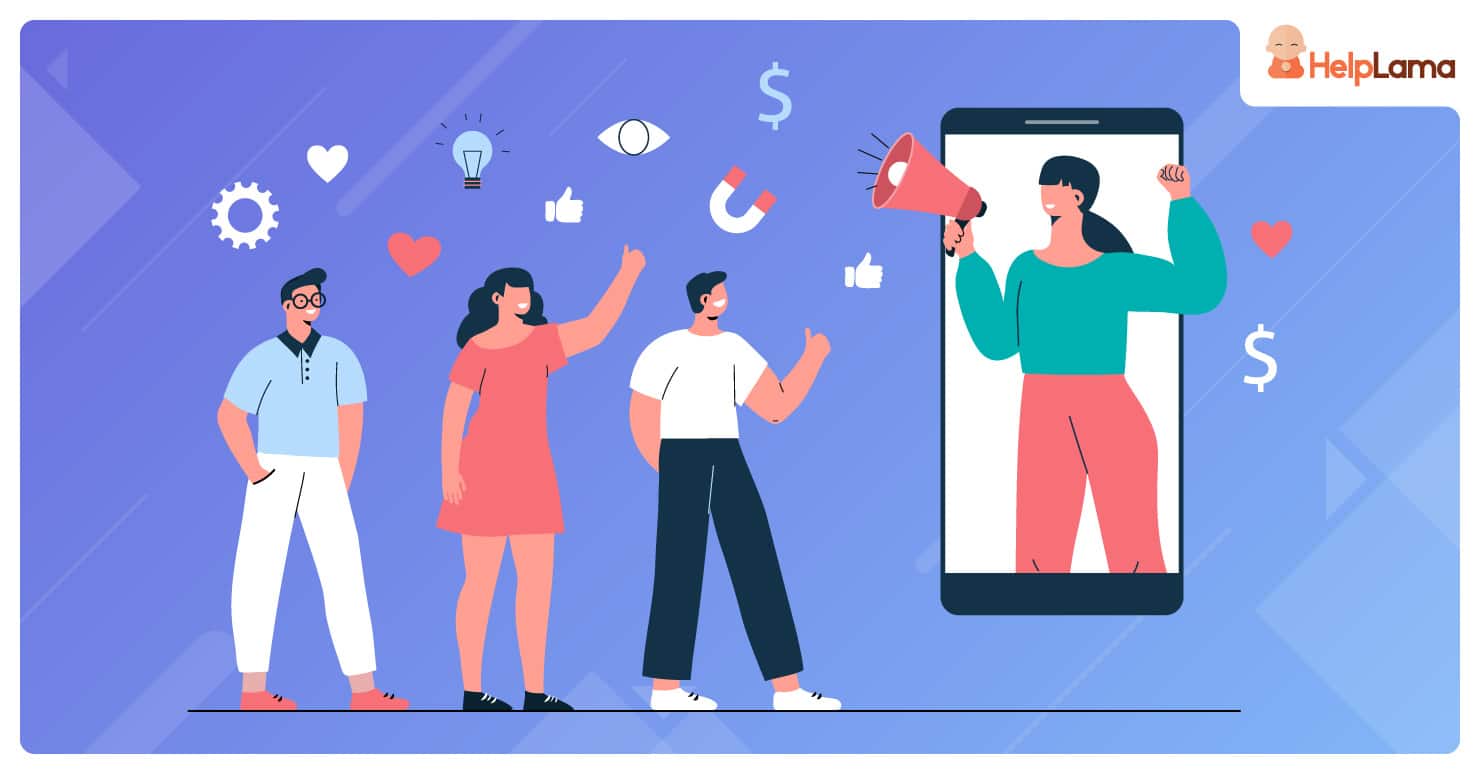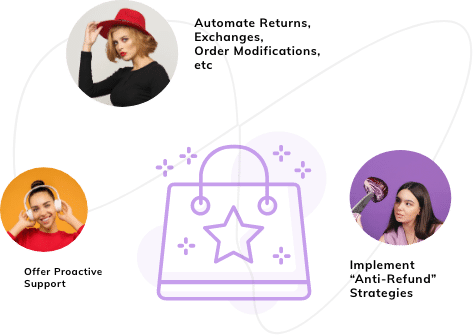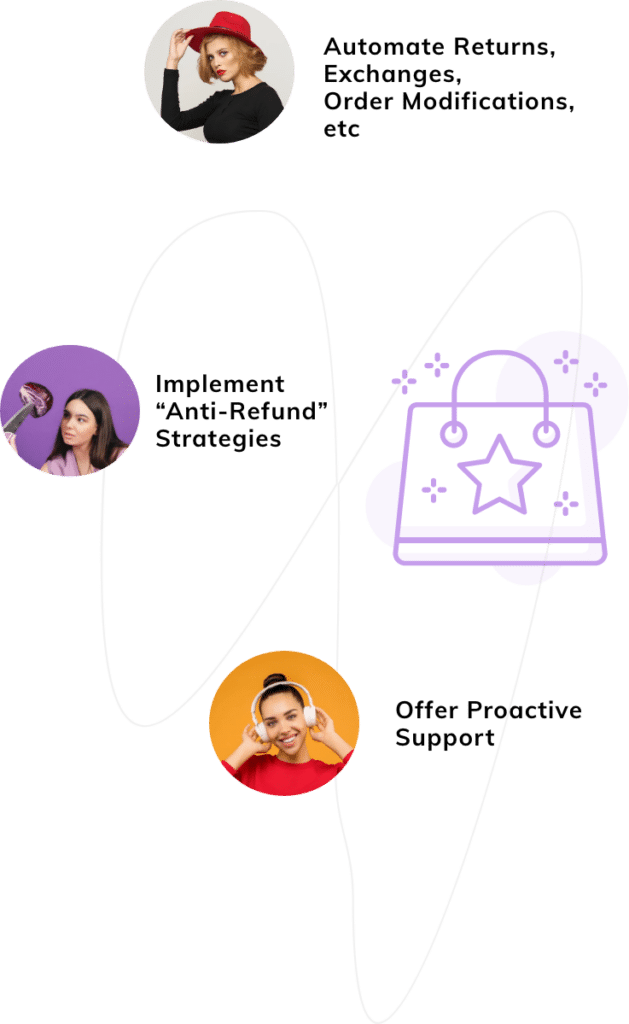Last Updated: April 2024
If you want to grow your Shopify store, there is a list of things you can potentially do. Influencer marketing is unquestionably at the top of this list, and this guide will explain why and how you should get started.
I’m sure you’ve noticed it’s nearly impossible to scroll through any social media platform without coming across some form of influencer marketing. It’s never been easier to partner up with influencers to create and drive awareness about your brand or products. The best part is that you no longer need to work with well-known celebrities to promote your band.
In this article, we’ll walk you through everything you need to know about influencer marketing, from how much it costs to finding the right influencers, planning a campaign, and ultimately increasing your engagement and conversion. Let’s get started!
- What Exactly Is Influencer Marketing?
- How Much Does Influencer Marketing Actually Cost?
- How to Find the Right Influencers for Shopify Influencer Marketing
- Micro-influencers or Macro-influencers for Your Shopify Influencer Marketing Campaign?
- How to Create an Effective Shopify Influencer Marketing Strategy?
- Why You Should Consider Using an Influencer Marketing Platform
What Exactly Is Influencer Marketing?
Influencer marketing is the practice of marketing your products and services through various online channels by collaborating with individuals who have influence over a group of followers.
The majority of influencers have devoted fan bases – people who value their opinions and tastes or enjoy following their lifestyle. As a result, they can have a direct impact on their followers’ purchasing decisions through social media product placement and endorsements.
Collaboration with these influencers can provide your brand with high-quality content, more credibility, and new customer awareness.
How Much Does Influencer Marketing Actually Cost?
The cost of influencer marketing is determined by the size of your business and the resources available to you. Some of the factors include:
- The influencers’ reach
- Type of content(images, videos, or audio)
- The number of posts
- Engagement metrics
- The social media channels they use
- The length of the campaign
- Platforms where the ad will be promoted/cross-posted
- Agency fees( if required)
Looking at these various factors, it’s clear that there is no definitive answer to the question, ‘How much does an influencer marketing campaign cost?’
The only way to truly know the cost of the campaign is to reach out to the influencers you want to collaborate with and email/ call them to inquire about their specific rate.
How to Find the Right Influencers for Shopify Influencer Marketing
Anyone who has tried influencer marketing knows how difficult it is to find relevant influencers for your brand. This is especially true now that the market is flooded with various influencers and you have a variety of choices to choose from. We’ve gone over some steps to help you cut through the noise and find the right influencer:
Influencers are classified according to the follower count:
- Mega-influencers(1M+ followers)
- Macro-influencers(100,000 to 500,000 followers)
- Micro-influencers(10,000 to 100,000 followers)
- Nano-influencers(1,000 to 10,000 followers)
Before we start, let’s establish a ground rule: you should focus on collaborating with influencers in your niche.
Here are some steps to find the right influencers:
- Influencers in your niche with high engagement are almost certainly ranking for your target keywords, hashtags, and phrases. Using industry-specific search terms to find influencers is thus a good place to start.
- Use an influencer marketing tool/platform
- Look through your customer base for potential influencers
- Research your competitors
- Ask employees for recommendations
(Pro tip: Look for an influencer who has more than just a large social following; rather, look for someone who has the right audience for your needs.)
If the idea of sifting through various pages in search of influencers does not appeal to you, you should consider using a tool like Helplama’s helpdesk. It helps you identify your loyal customers, and request them to create user-generated content for your business. Let’s face it, No one knows the ins and outs of your products better than your own customers.
Micro-influencers or Macro-influencers for Your Shopify Influencer Marketing Campaign?
Once again, this depends on your brand objectives. If you’re looking for reach and brand awareness, you can’t go wrong with macro-influencers with a huge following.
However, these influencers can be costly to secure because many of them work with agencies. You’ll also have to deal with low engagement and skepticism.
Micro-influencers, on the other hand, do not guarantee a large audience. However, as a result of their close interactions with their followers, they deliver high levels of engagement. In fact, micro-influencers have a 60% higher engagement rate than macro-influencers.

Even large corporations have realized that it is no longer just about audience size and reach. The Banana Republic is an excellent example of a big brand working with Instagram fashion and lifestyle micro-influencers.
How to Create an Effective Shopify Influencer Marketing Strategy?
For most Shopify brands, hiring professionals to navigate this on your behalf is probably a good idea, but for smaller companies or brands, starting your own influencer marketing may be the way to go.
The first thing you need to do to get started is to plan your influencer marketing strategy and target a specific audience for your campaign.
Here are some steps for building a solid influencer marketing strategy:
Establish your campaign goals

You can’t carry out a marketing campaign unless you know why you’re doing it. Setting goals and clearly defining what you want to achieve is the first step in executing a successful influencer marketing program.
- Do you want to increase the number of registrations for an upcoming product launch?
- Do you want to reach a new audience and boost your online presence?
- Do you want to improve your online credibility and strengthen your reputation? ..etc
The answers to these questions will determine the end goals of your influencer marketing strategy.
(Tip: Make sure your campaign goals are specific, measurable, and achievable.)
Identify your target audience
One of the primary reasons that most brands hire influencers is to reach new target customers. Consider the following factors:
- Your target demographic’s age
- Your target audience’s location
- Likes, dislikes, and interests
- Purchasing habits
- Identifying social media platforms where your target audience is active, etc
Even if you believe Facebook is the best place to start, if your target audience isn’t on the platform, starting the campaign on it makes no sense. This is why it is critical to understand your target audience and where they hang out online.
(Tip: If you’re just starting out, it’s best to focus on one platform at a time and only expand to others later.)
Set a budget

Depending on your budget, your influencer campaign can be a low-cost approach or a large-scale marketing campaign.
When compared to other traditional marketing approaches, influencer marketing has the potential to help your brand achieve a higher ROI. (According to 89 percent of marketers, the ROI from influencer marketing is better or comparable to other channels)
However, this is only true if your campaign has a planned, well-structured budget.
You will be able to choose the right influencers, understand the scope of your campaign, and predict your results based on your budget.
(Tip: If you’re just getting started and want to test the waters, we recommend working with micro-influencers and allocating a smaller budget. This makes sure you don’t blow through your marketing budget and that you get the most out of it.)
Define KPIs

When it comes to setting up influencer campaigns, brands across the board use different metrics, which can vary depending on the goals of each company. These metrics can also be used to track the performance of your campaign.
Based on the results, you can determine which parts of your campaign require more attention.
Here are some KPIs to help you get started:
- Increased social media following
- Engagement (Comments, likes, shares, repins, retweets, etc)
- Ad clicks
- Awareness (e.g., impressions, views)
- Increased sign-ups
- User-generated content
- Sales etc.
Setting campaign benchmarks ensures that your influencers are fully aware of your objectives and expectations.
(Tip: Provide your influencers with access to the right metrics and answer questions about performance at any point during the campaign. For example, if your primary goal is to drive traffic to your listings, they must be aware of this so that all relevant links need to be included. We’ve covered the importance of an influencer campaign brief below.)
Develop a content plan
Now that you’ve defined your campaign’s goals, identified KPIs, and established a budget, it’s time to decide on the content plan.
Some different content formats you can opt to meet your business goals include:
- Sponsored content
- Organize giveaways or contests
- Behind-the-scenes content
- Influencer affiliate programs
- Product unboxing
- Host giveaways
- Social media takeovers
Influencers often have a unique style of working. So it’s important that you give your influencers the creative freedom to select the best format. Have a specific plan so you and your influencers need to be on the same page and agree to use the same content formats.
(Tip: You can even reuse content from your campaigns. After the influencers have finished sharing your content with their audiences, you can reformat it and distribute it through various channels to provide value to your customers. For example, you could convert a content piece into infographics or video content.)
Create a campaign brief
A campaign brief helps set the ground rules for your influencer marketing campaign. This informs potential influencers about who you are, and what you hope to achieve.
Campaign briefs should be simple and to the point. Here are some basic elements any influencer brief should have.
- Objectives of the campaign
- Key brand messages
- Influencer deliverables(Number of posts, content format, platform)
- Brand values
- Content theme
- Content Process Review
- Payment details
Also, make sure to include campaign do’s and don’ts when briefing influencers.
For example: Do’s include
- Include the brand’s hashtag in all posts
- Include specific campaign content in the post’s caption
Don’ts
- Avoid using profanity in sponsored content
- Avoid including content containing alcohol or drugs.
Draw a contract

When launching your own campaign, it is important to carefully select your influencers and contractually protect your brand.
This means you need to draft an FTC-compliant contract before you begin your campaign.
Since Influencer marketing is multifaceted, a contract serves as a formal way to ensure that everyone is on the same page about what the requirements and deliverables are.
You must include all relevant information in your terms and conditions, such as
- Transparency rules
- Collection of analytical data
- Copyright and content requirements
- Payment requirements
- The approval process for deliverables
- Ownership of content
- A cancellation clause, to name a few.
Measure performance
Now that you’ve got your campaign rolling it’s time to see if it’s generating the desired results. We do that by measuring campaign performance with respect to the KPIs we’ve set earlier.
It might be overwhelming to see the large number of likes and comments your branded content gets, especially if you’ve partnered up with a popular influencer. However, metrics such as likes, comments, and followers do not reflect the effectiveness of your influencer marketing campaign.
Here’s how you can calculate the real return on investment for your influencer marketing campaign:
- UTM parameters( These are short text codes that you add to URLs that help you track the performance of a webpage or campaign)
- Unique discount codes( will help you track the sale and customers that came through the influencer)
- Read direct comments on your content
- Use social media analytics tools to monitor the engagement metrics
- Create separate affiliate links
- Asking our influencers to provide periodic reports
Without tracking these metrics, you won’t know where to optimize, when to pull funding or when to give your influencer more control. The data doesn’t lie, so make sure you use it!
Why You Should Consider Using an Influencer Marketing Platform
All these steps sound like a lot of work but the good news is using an influencer marketing platform instead can be a quick and simple way to begin working with various influencers.
So, what is an influencer marketing platform exactly?
In essence, these platforms connect brands and influencers for marketing campaigns. Your company can use an influencer platform to find, analyze, and manage online influencers and their content.
Working with these platforms is fairly simple:
- You create a profile on the platform and include all of your influencer requirements, such as target age, niche, gender, number of followers, and so on. Some of these platforms have vetting processes in place to ensure that influencers have high levels of engagement and authentic practices.
- Following that, the platform promotes your brand’s campaign among its influencer database. Influencers who believe they would be a good fit for your campaign can then contact you.
- Most platforms allow you to track and analyze each influencer’s revenue and guide them in creating user-generated content for your business.
If you’re looking for a platform that allows you to centralize your marketing and support efforts on a single platform, the Happine.cc is the Shopify influencer app for you.

This app assists your marketing team by collecting data on your loyal customers and their social media presence. Here are some key features why businesses choose Helplama’s helpdesk:
- This app collects Google reviews, Trustpilot reviews, and user-generated videos for you to use as social media content.
- The platform saves you time and effort by eliminating the need to sift through large databases and manage multiple influencers.
- This app is inexpensive and simple to set up, and your team can get started with it with little to no training.
Conclusion
Are you ready to launch your own Shopify influencer campaign?
If you’re new to influencer marketing, these pointers should help you get set up and started in no time.
Influencer marketing is clearly a powerful strategy for expanding your brand’s reach, improving customer trust, building your audience, and ultimately driving more sales for your products and services.
However, working with influencers involves more than just sending a DM or an email asking if they want to collaborate. The good news is; that there are numerous influencer marketing platforms available, making it easier than ever to start working with Shopify influencers.
So, what are you waiting for? Create your campaign now and automate all of your influencer marketing requirements.








